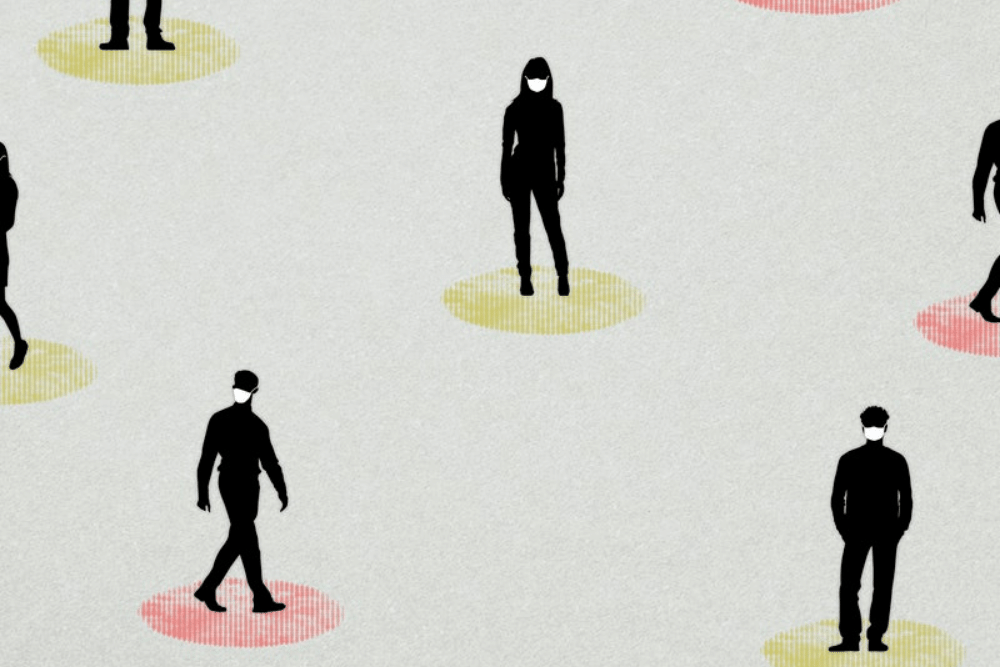Anyone suffering from a mental health disorder understands that triggers are crucial to identifying and developing coping mechanisms. Triggers can pop up at the worst time and disrupt a person’s daily functioning, whether at work, a child’s birthday party, or in a serious meeting. Circumstances that bring about isolation and loss of a physical connection with loved ones can make it much worse, especially for those suffering from anxiety and depression.
When the COVID-19 pandemic hit the world, stay-at-home orders prompted a significant change in the way millions of people live and interact. Schools, businesses, religious buildings, and more were shut down, and suddenly, millions of Americans had to stay home and stay away from each other. Big cities like Los Angeles, New York City, and Washington D.C. experienced the pandemic in an arguably more intense way, as their large and concentrated populations allowed the virus to spread quickly and impact thousands of people, prompting more stringent measures. Naturally, questions that may be biting are:
- Are more people at risk for mental health issues nowadays?
- What about our children?
- What does isolation do to us?
What the Data Says
The CDC is conducting research and collecting survey information from the public to better understand the statistics of mental health cases. What we do currently know for sure is that mental health issues were already high in the United States. pre-pandemic; about one in five adults were living with a mental illness in 2019.
Today, that number is likely much higher considering the tremendous changes in daily life that alter peoples’ appetite, sleep patterns, and relationship dynamics. Some people are consuming more drugs, alcohol, and food topped off with decreased physical activity. Others may be experiencing boredom, fear, and uncertainty and are forced to sit with their thoughts and the difficult situation they are facing. That by itself can drive a person mad — imagine if you already have a mental health disorder.
It has been found that longer quarantine durations are associated with significant mental health symptoms like post-traumatic stress, avoidance behaviors, and anger. Job loss also impacts peoples’ self-esteem and is associated with depression, anxiety, and increased substance use.
How Are Our Kids Affected?
A study published in the U.S. National Library of Medicine found high rates of depression, anxiety, and post-traumatic symptoms in children. A review paper found that, in general, loneliness experienced during isolation is associated with adverse mental health in children and adolescents. The study found that social isolation and loneliness increased the risk of depression nine years after a (past) pandemic. Duration of loneliness was strongly associated with mental health symptoms. One study suggests that more research is needed for a deeper understanding of the impacts, alongside developing mental health resources that are easily accessible to youth.
Has Covid-19 Impacted the Mental Health of Survivors?
According to the CDC, neurological and psychiatric conditions have been reported in patients who’ve recovered from the virus. Although not common, these conditions include sleep issues, difficulty with concentration, memory problems, depression, anxiety, and mood changes. At this time, the long-term significance of these issues is unknown. Another study by the National Institue of Health found that patients reported experiencing the following disorders:
- 28% experienced PTSD
- 31% experienced depression
- 42% experienced anxiety
- 20% experienced OCD symptoms
- 40% experienced insomnia
They also noted a possible association between low-grade inflammation observed in mood disorders and psychopathological symptoms in COVID-19 survivors. However, more research is needed.
How to Cope With COVID-19 Changes
The most significant thing you can do during this time is taking care of yourself. Self-care plays a vital role in coping with symptoms of mental health disorders. Routine also plays an essential role in everyday life, helping structure what we do and when we do it. If you are stuck at home, try to develop a routine to keep you disciplined and motivated. If you are now exclusively working from home, separate your workspace from your living space. Take breaks from listening to the news and social media, and exercise and meditate.
Not being able to see family or friends is one of the most challenging aspects of this pandemic for some, but thankfully Zoom, Skype, and other technologies can readily connect us for the time being. If your kids are home from school, it’ll be essential to develop a similar routine for them as well, including creative and physical activities. When and wherever possible, recreating social networks and interactions can be critical.
Lock-downs, fear, job loss, sickness — millions of Americans are in the same boat, and it feels like that boat is sinking. Anxiety, depression, insomnia, substance abuse, and more are plaguing people day in and day out as we struggle to find a sense of normalcy during a global pandemic. The long-term psychological and physical impacts of isolation due to COVID-19 are still unknown. Fortunately, you can do things to alleviate any anxiety or stress you may be experiencing, like developing a routine, exercising daily, and frequently videoing with friends and family. However, for some people — like those who are already suffering from mental health disorders — this may not be enough. That’s okay. Oceanfront Recovery is equipped with licensed therapists trained in providing the best care. We offer a range of treatment programs, including our Anxiety and Depression Treatment Program and Substance Abuse Treatment Program. Call us today at (877) 279-1777 to learn more about our programs.







